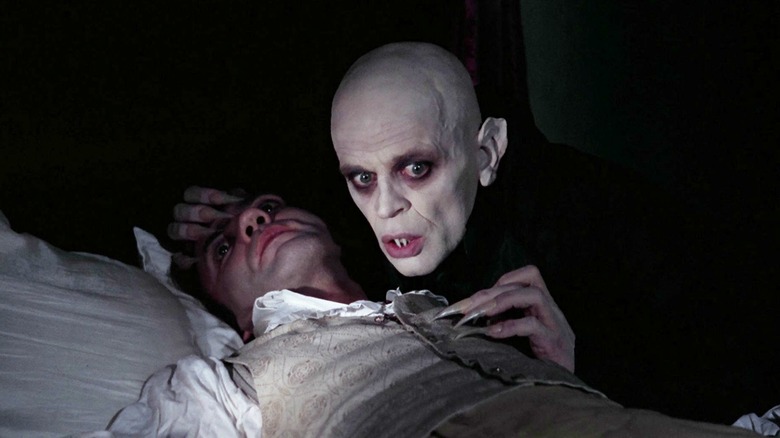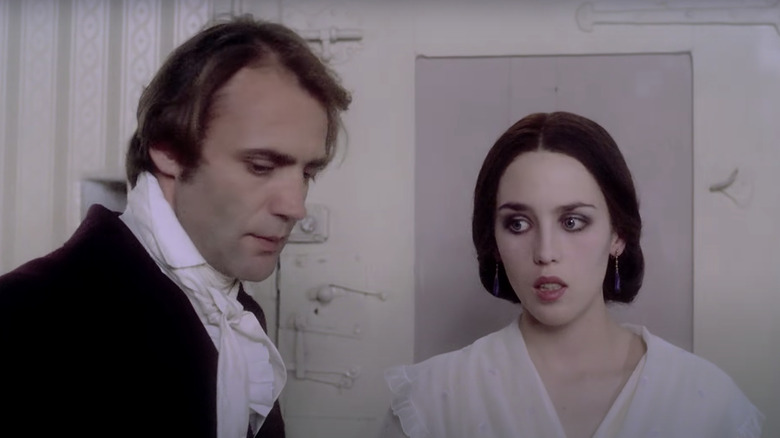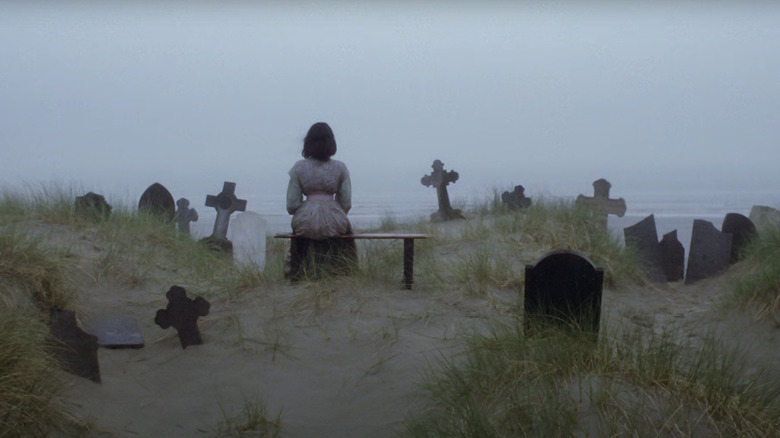Year Of The Vampire: In Nosferatu The Vampyre, Werner Herzog Made Dracula A Spiritual Blight
(Welcome to Year of the Vampire, a series examining the greatest, strangest, and sometimes overlooked vampire movies of all time in honor of "Nosferatu," which turns 100 this year.)
Civilization is a tenuous notion in "Nosferatu the Vampyre," Werner Herzog's 1979 remake of the original "Nosferatu: A Symphony of Horror." The movie begins with footage of mummies in a cave, their faces frozen in ghastly, Edward Munch-like expressions. The camera pans down and we see that some of them are wearing shoes and fashionable heels, an image at odds with their half-decayed state and the spooky, ethereal choral chanting of Popol Vuh's "Brüder des Schattens" ("Brothers of the Shadow").
A bat flies in through the window of the bedroom where Lucy Harker, played by Isabelle Adjani ("Possession"), wakes screaming from a nightmare. Her husband Jonathan (Bruno Ganz) tries to console her, but he'll be riding off soon, despite her presentiments that something bad is going to happen. From there, "Nosferatu the Vampyre" segues into scenes of idyllic canals and cute kittens in the town of Wismar, Germany. "An inner nameless deadly fear" intrudes on this town, first through Lucy's mind, then through a ship of rats that comes sailing into it.
Herzog once referred to his frequent collaborator, actor Klaus Kinski, as "a monster and a great pestilence." Here, Kinski looks and plays the part, with long, sharp nails, rodent-like incisors, and pointy goblin ears characterizing his Orlok-style Dracula. This same human "pestilence" was once diagnosed as psychopathic, and he's been accused of abusing his daughter, Pola Kinski, the sister of "Paris, Texas" star Nastassja Kinski. In "Nosferatu the Vampyre," his real-life scourge adds another layer of revulsion to our antipathy at the spiritual and societal rot Dracula represents.
What it brought to the genre
"Nosferatu the Vampyre" brought a dose of post-war existentialism to the Dracula myth. On the one hand, Kinski's Count Dracula, here restored to his rightful name, evokes more sympathy as a character than Max Schreck's Count Orlok. On the other hand, he seems to open up a deeper abyss in the souls of Lucy, Jonathan, and Wismar.
As TV Guide notes, Herzog felt "the 1922 film adumbrated the rise of Nazism in Germany," and in fact, one of his own actors, Walter Ladengast, who plays Dr. Van Helsing, was reportedly a Nazi sympathizer. The Jewish Virtual Library helps illuminate how images like the cover of the antisemitic dime novel "Jew Jokes" may have carried forward through the silent Orlok into antisemitic children's books like "The Poisonous Mushroom" and Nazi propaganda films like "The Eternal Jew."
It's disturbing stuff. By the late 1970s, however, World War II was long since over and what was left was "a generation without fathers," as Herzog called it in a 1978 New York Times interview. This is the same interview where he laid out his intent for "Nosferatu the Vampyre" as "a parable about the fragility of order in a staid, bourgeois town."
That fragility extends to the individual human psyche and its own sense of truth and stability. En route to Dracula's castle in Transylvania, Jonathan Harker encounters locals who warn in their language against "a great chasm" that "swallows the unwary." A translator tells him:
"The Gypsies here have been saying that no such castle exists except maybe in the imagination of man. Just the ruin, they say. A ghost castle. A traveler who enters into that land of the phantoms is lost and can never return."
'The hour of distress'
Even before Harker arrives at the castle, things take a weirdly epistemological turn, where he has his concept of objective reality called into question by a coachman who refuses to even acknowledge that he has a coach (despite it being right there where Harker can pet the horses). Transylvania here is envisioned as a realm of mist and waterfalls, cobwebs and cracked windows.
"This castle is so strange, at times I wonder if it isn't part of that dream," Harker remarks. "Everything about it looks so unreal." Handheld camerawork gives his sojourn a more experiential feel, and it increases the terror when he cuts his thumb on a bread knife and Dracula discards any pretense of hospitality for "the oldest remedy" of bloodsucking.
Back at home, Lucy feels, "God is so far from us in the hour of distress." She wears a cross necklace, but says, "Salvation comes from ourselves alone." For Lucy, "Death is the only thing clearly sure," and, "Faith is the amazing faculty of man which enables us to believe things which we know to be untrue." Yet she still prays, crushing up communion wafers to combat the plague of Dracula, which knocks off tree branches as it sweeps into Wismar's canals on a ghost ship filled with rats and black coffins.
Van Helsing is of no help to Lucy, as he values science over superstition and believes vampires only exist in her imagination. By the end, rats are everywhere, horses lie dead in the street, pigs and sheep roam freely through the town square, the town council is dissolved, the mayor is dead, the police are gone, and Wismar has quietly unraveled. People dine and dance, and we know Dracula's curse will continue beyond the closing credits.


